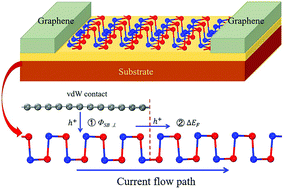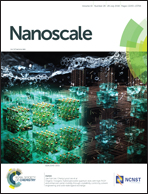2D SnSe-based vdW heterojunctions: tuning the Schottky barrier by reducing Fermi level pinning†
Abstract
Two-dimensional (2D) SnSe is a very promising material for semiconducting devices due to its novel properties. However, the contact behavior between a 2D SnSe sheet and a three-dimensional (3D) metal surface shows an un-tunable Schottky barrier because of the metallization of the SnSe sheet induced by strong Fermi level pinning at the contact interface. In this work, we use graphene rather than 3D metals as the metal electrode which comes into contact with a single-layer SnSe sheet to form a van der Waals (vdW) heterojunction. Based on state-of-the-art theoretical calculations, we find that the intrinsic properties of the SnSe sheet are preserved and the Fermi level pinning is weakened because of the vdW interaction between the SnSe sheet and graphene. We further demonstrate that an Ohmic contact can be realized by doping graphene with boron or nitrogen atoms or using other high-work-function 2D metals such as ZT-MoSe2, ZT-MoS2, or H-NbS2 sheet as the electrode to reduce the Fermi level pinning, leading to a spontaneous hole injection from the electrode to the channel material. This study sheds light on how to tune the Schottky barrier height for better device performance.



 Please wait while we load your content...
Please wait while we load your content...